Tabby cats, instantly recognizable by their distinctive coat markings, are a staple in the feline world. It’s a common misconception that “tabby” refers to a cat breed, but it actually describes a coat pattern. This pattern, characterized by stripes, swirls, spots, or ticked markings, combined with a signature ‘M’ on the forehead, can appear in various cat breeds and a stunning array of colors. Understanding Tabby Cat Colors and patterns opens up a fascinating aspect of feline genetics and aesthetics.
What exactly defines a tabby cat? Beyond the tell-tale ‘M’ marking, the agouti hair is another key feature. Agouti hairs have bands of alternating light and dark pigment, giving each hair a multi-toned appearance. This banding effect contributes to the richness and depth of tabby patterns. Let’s delve into the diverse world of tabby cat colors and patterns, exploring the nine most common and captivating variations you might encounter.
 A chart showcasing 9 types of tabby cat colors including Classic, Mackerel, Spotted, Ticked, Tortoiseshell, Brown, Red, Silver, and Calico, each represented by a distinct cat image and pattern example.
A chart showcasing 9 types of tabby cat colors including Classic, Mackerel, Spotted, Ticked, Tortoiseshell, Brown, Red, Silver, and Calico, each represented by a distinct cat image and pattern example.
Exploring the Spectrum: 9 Tabby Cat Colors and Patterns
1. Classic Tabby: The Marbled Marvel
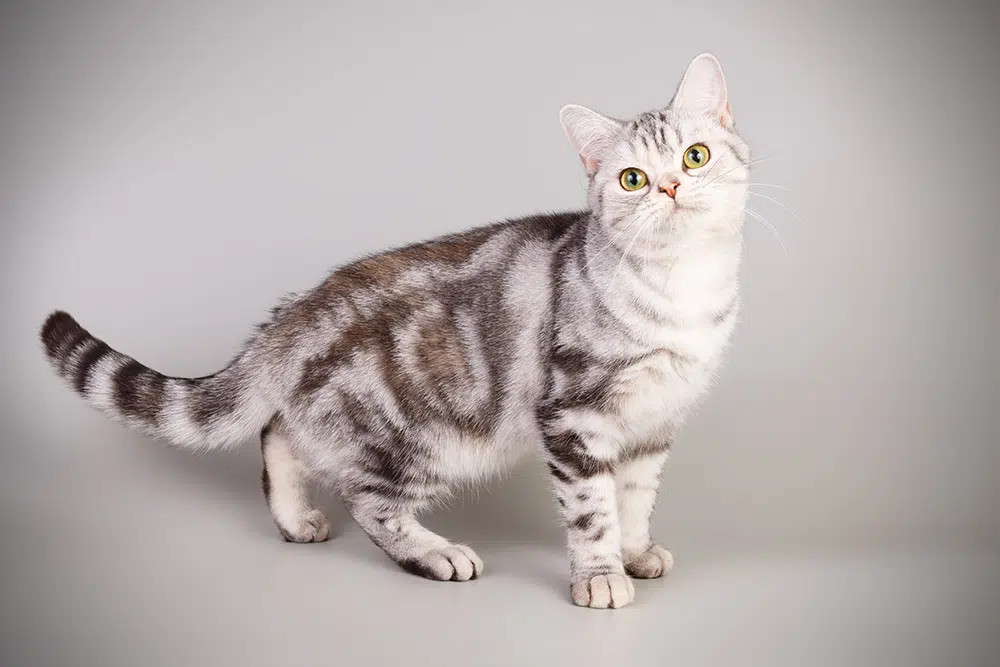 A close-up of an American Shorthair cat with a classic tabby pattern, showcasing swirling, marbled markings on its side and shoulder.
A close-up of an American Shorthair cat with a classic tabby pattern, showcasing swirling, marbled markings on its side and shoulder.
The Classic Tabby pattern, sometimes referred to as marbled tabby, is characterized by bold, swirling patterns on the cat’s flanks. Imagine looking at a marble countertop – that’s the essence of this tabby type. They exhibit thick stripes on their face, legs, and tail, but the body showcases these distinctive, flowing swirls. No two Classic Tabbies are exactly alike; their marbled patterns are as unique as fingerprints, adding to their individual charm. This pattern is often prominent in breeds like the British Shorthair and American Shorthair.
2. Mackerel Tabby: The Tiger Look-Alike
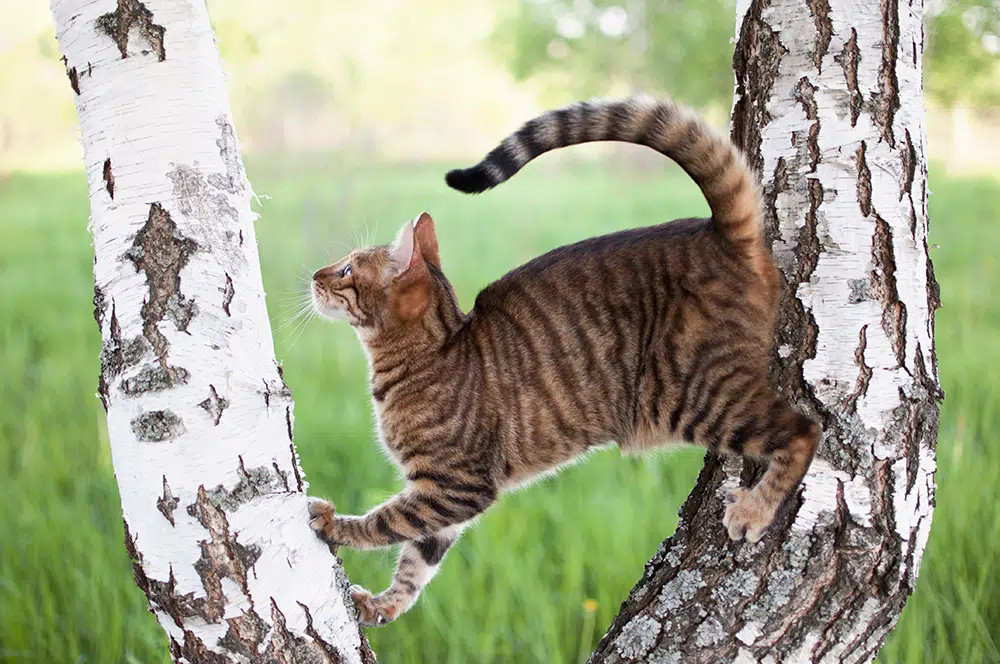 A Toyger cat with a mackerel tabby pattern, pictured climbing a tree, highlighting the vertical stripes along its body and the tiger-like appearance.
A Toyger cat with a mackerel tabby pattern, pictured climbing a tree, highlighting the vertical stripes along its body and the tiger-like appearance.
The Mackerel Tabby, often nicknamed “tiger tabby,” is perhaps the most commonly visualized tabby pattern. It features vertical, parallel stripes running down the sides of the body, resembling the skeleton of a fish – hence the name “mackerel.” A prominent stripe runs along the spine, with thinner stripes branching out from it. These stripes are typically uniform and clearly defined, lending a sleek and somewhat athletic appearance to the cat. Mackerel tabbies also frequently have spots on their belly, adding a playful contrast to their structured stripes. Breeds like the Toyger are specifically bred to enhance this wild, tiger-like mackerel tabby appearance.
3. Spotted Tabby: Dots of Feline Fashion
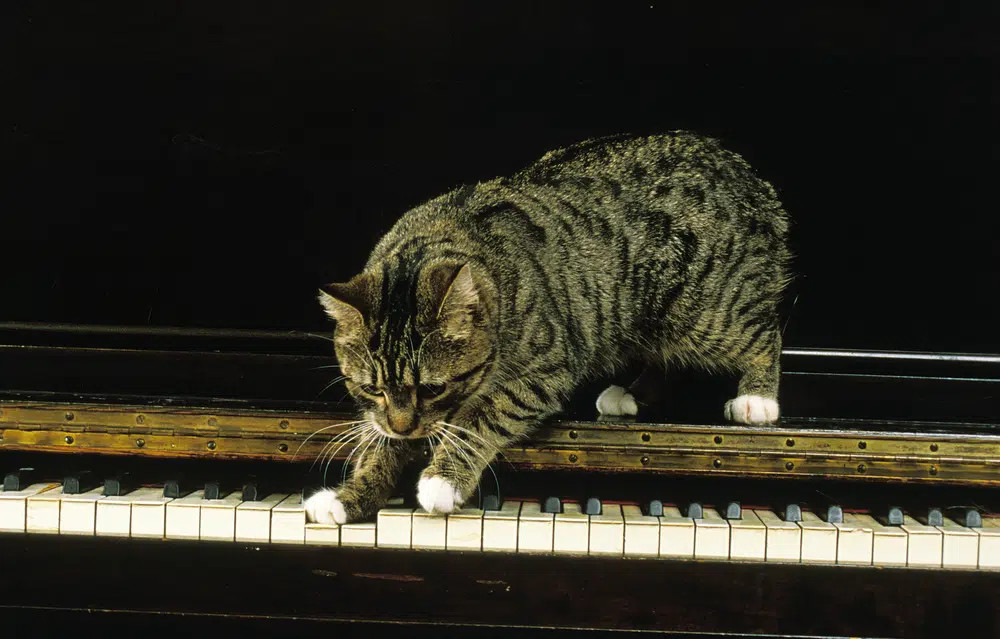 A Manx cat with a spotted tabby pattern, standing and looking alert, displaying distinct spots rather than stripes on its coat.
A Manx cat with a spotted tabby pattern, standing and looking alert, displaying distinct spots rather than stripes on its coat.
The Spotted Tabby pattern is a delightful variation where stripes are broken up into spots of varying sizes and shapes scattered across the body. These spots can range from small and round to larger, oval shapes, and sometimes appear as broken mackerel stripes. The spotting pattern can evoke the look of wild cats like cheetahs or ocelots, lending an exotic flair. Breeds such as the Ocicat and American Bobtail often display striking spotted tabby coats, although the pattern can appear in many breeds.
4. Ticked Tabby: The Subtle Sophisticate
The Ticked Tabby, also known as Abyssinian or Agouti Tabby, stands out as the most subtle tabby pattern. At first glance, ticked tabbies may appear to have a solid color coat. However, upon closer inspection, you’ll notice that each hair shaft is actually banded with multiple shades of color, thanks to the agouti hairs. This creates a salt-and-pepper or sand-like effect. While they lack the bold stripes or spots on the body, ticked tabbies still exhibit the classic ‘M’ forehead marking and may have tabby stripes on their face, legs, and tail. The Abyssinian breed is renowned for its ticked tabby coat.
5. Tortoiseshell Tabby (Torbie): A Patchwork of Patterns
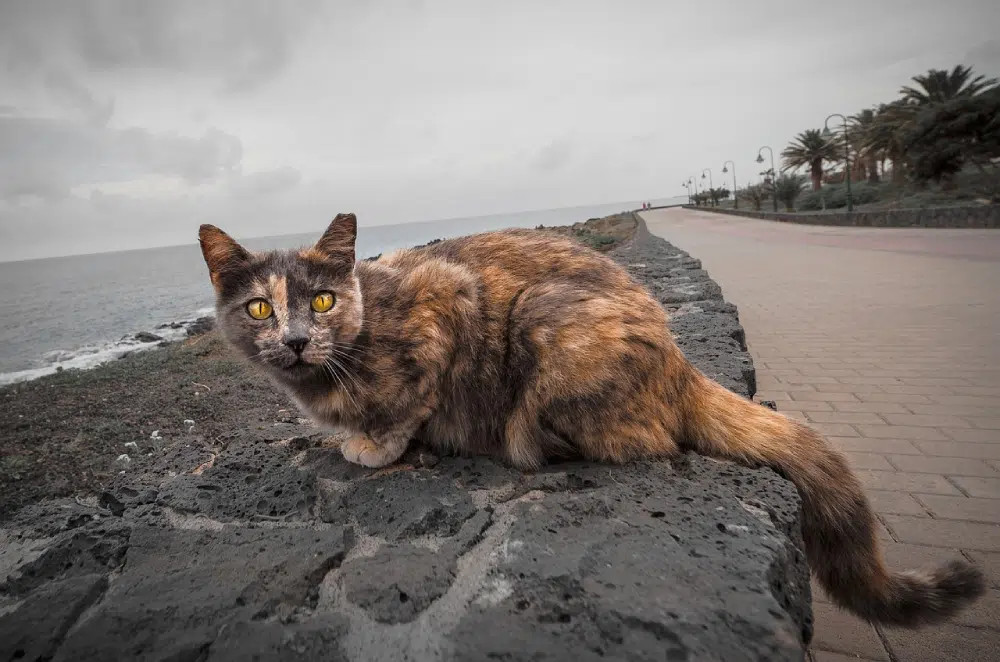 A tortoiseshell tabby cat, or torbie, with yellow eyes, sitting on a beach, displaying a mix of tortoiseshell patches and tabby stripes, especially visible on the face.
A tortoiseshell tabby cat, or torbie, with yellow eyes, sitting on a beach, displaying a mix of tortoiseshell patches and tabby stripes, especially visible on the face.
Tortoiseshell Tabbies, affectionately called “Torbies,” are a unique combination of the tortoiseshell color pattern and tabby markings. They inherit the mottled patches of black, brown, and red (or cream, chocolate, and orange) from tortoiseshell cats, overlaid with tabby stripes. The tabby stripes are often most visible on the face, legs, and tail, and may be any of the tabby patterns – classic, mackerel, spotted, or ticked. Sometimes, the tabby markings can be less distinct due to the intermingling of tortoiseshell patches, creating a beautifully complex and varied coat.
6. Brown Tabby: Earthy and Endearing
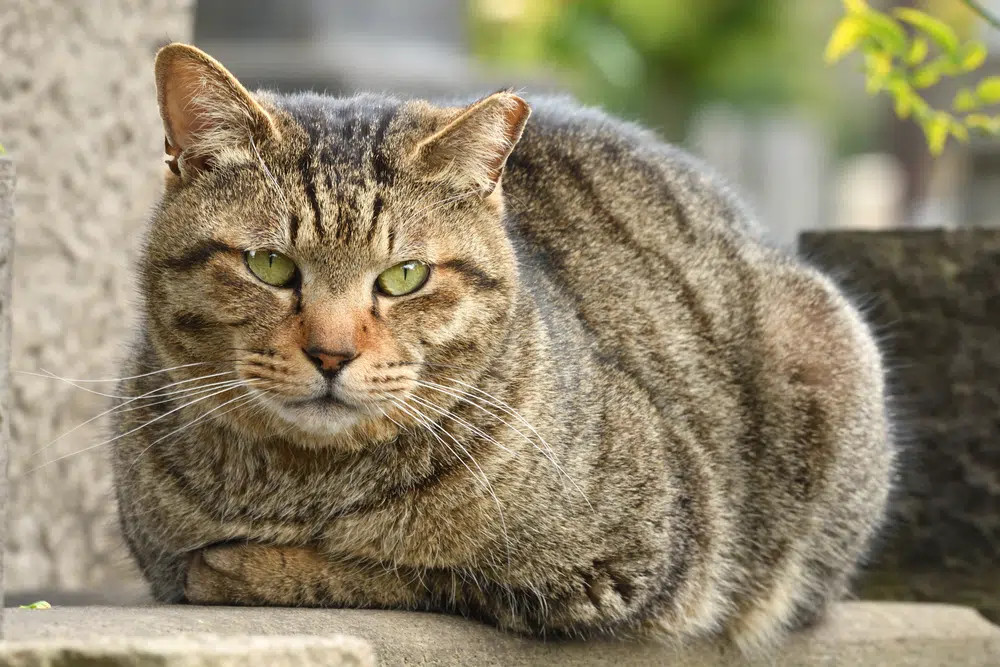 A brown tabby cat curled up outdoors, showcasing warm brown tones and dark stripes on a tawny base, typical of the brown tabby coloration.
A brown tabby cat curled up outdoors, showcasing warm brown tones and dark stripes on a tawny base, typical of the brown tabby coloration.
The Brown Tabby is often considered the “original” tabby cat color, and it’s what many people picture when they think of a tabby. They feature warm, earthy tones with dark brown to black stripes set against a background of tawny, beige, cream, or caramel. The contrast between the dark markings and the lighter base color creates a rich, natural look. Brown tabbies can exhibit any of the tabby patterns – classic, mackerel, spotted, or ticked – and often have solid dark brown fur on their paw pads and ear tips.
7. Red or Orange Tabby: Fiery and Fun-loving
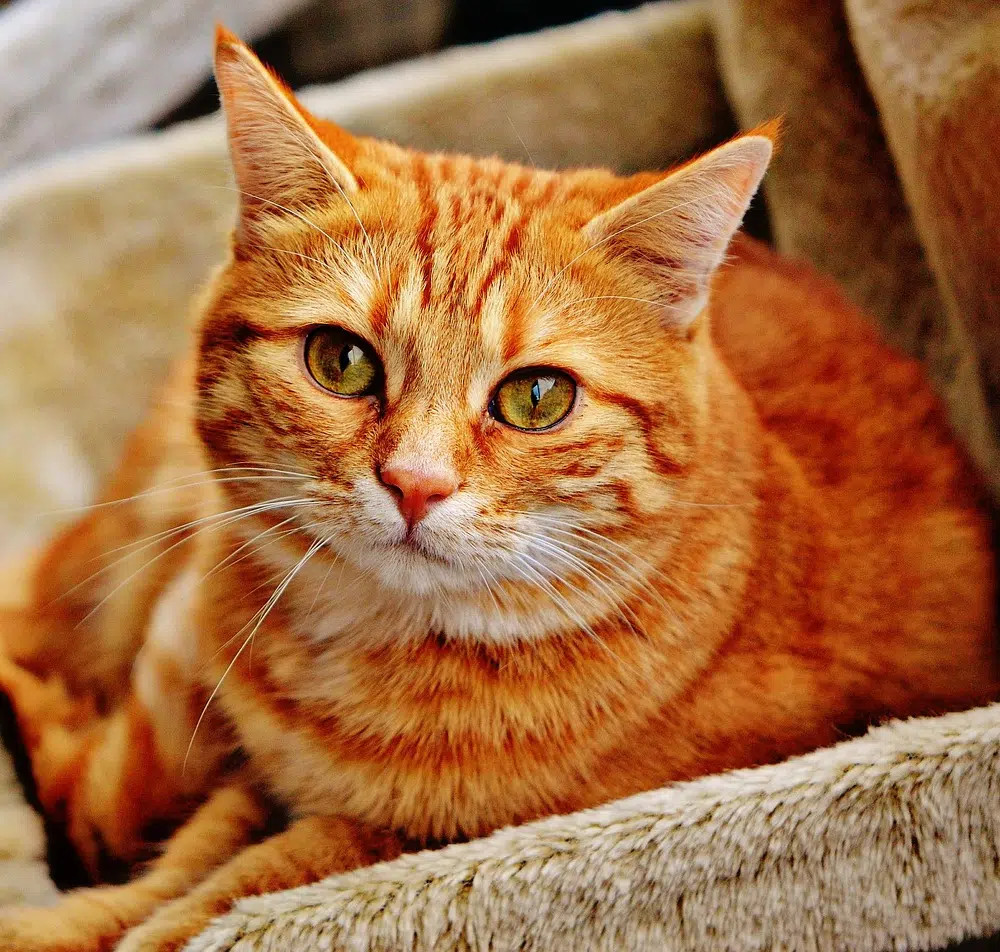 An orange tabby cat lying in a box, showing a range of ginger to auburn hues with darker stripes, characteristic of red or orange tabby cats.
An orange tabby cat lying in a box, showing a range of ginger to auburn hues with darker stripes, characteristic of red or orange tabby cats.
Red or Orange Tabbies, often referred to as ginger cats, display coat colors ranging from pale pastel ginger to a vibrant, almost auburn hue. Darker, richer stripes accentuate the warm base color, adding depth and visual interest. Genetically, all orange cats are tabby cats because the gene that produces the orange color is intrinsically linked to tabby patterns. The iconic cartoon cat Garfield is a quintessential example of a red or orange classic tabby, embodying the playful and sometimes bold personality often associated with these brightly colored felines.
8. Silver Tabby: Cool and Chic
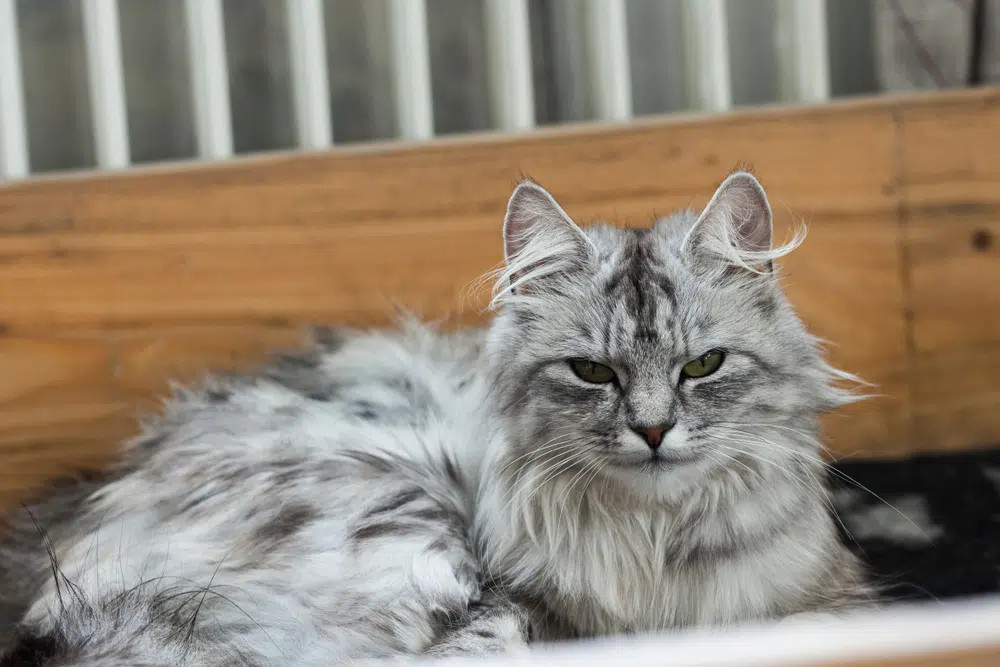 A Norwegian Forest Cat with a silver tabby pattern, also potentially mixed with Siberian breed traits, exhibiting cool gray tones and a sleek, metallic appearance.
A Norwegian Forest Cat with a silver tabby pattern, also potentially mixed with Siberian breed traits, exhibiting cool gray tones and a sleek, metallic appearance.
Silver Tabbies, sometimes called white tabbies, bring a sophisticated and cool aesthetic to the tabby spectrum. Their coats feature a base of silver or pale gray, overlaid with markings in darker grays or black. This combination creates a striking contrast and can give the coat a metallic sheen. The patterns in silver tabbies can range from high contrast, with bold black markings on a bright silver base, to more subtle variations with softer gray gradients. The Silver Tabby pattern can be found in various breeds, including the Persian and Maine Coon.
9. Calico Tabby (Caliby): A Tricolor Tabby
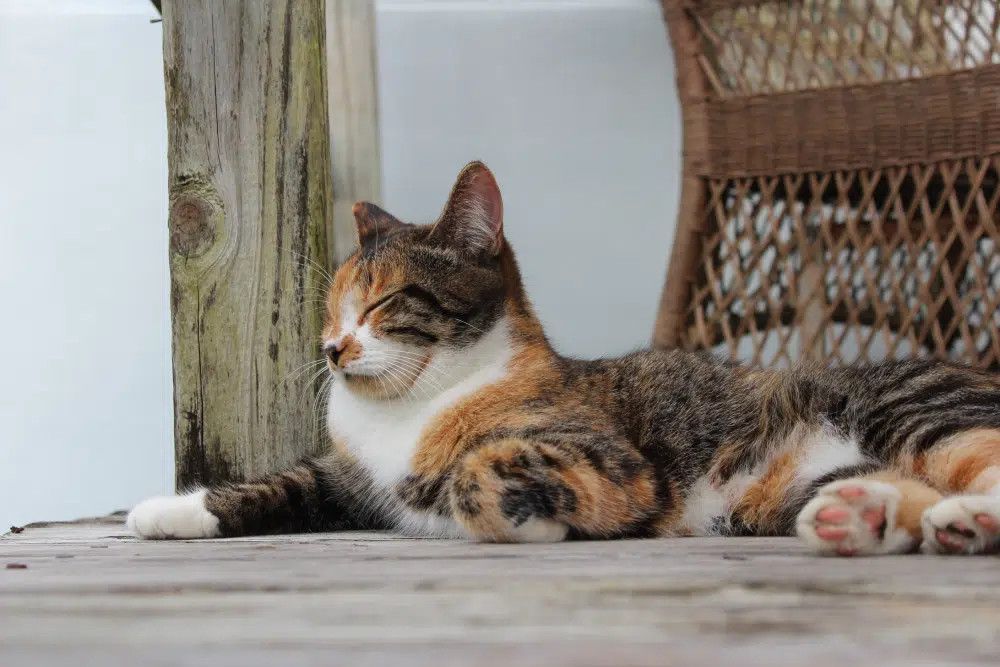 A calico tabby cat, or caliby, relaxing outdoors, showing a mix of white, orange, and black patches along with tabby stripes visible within the colored areas.
A calico tabby cat, or caliby, relaxing outdoors, showing a mix of white, orange, and black patches along with tabby stripes visible within the colored areas.
Calico Tabbies, sometimes playfully called “Caliby” cats, combine the calico color pattern with tabby markings. Calico refers to the tri-color coat of white, black, and orange (or their diluted versions). In a calico tabby, these distinct patches of color are interspersed with tabby stripes. The tabby markings, including the signature ‘M’ on the forehead, are visible within the colored patches, creating an artistic and eye-catching mosaic of color and pattern. Like tortoiseshell, the calico pattern is almost exclusively found in female cats.
In Conclusion: The Wonderful World of Tabby Cats
Tabby cats are undeniably popular, and their widespread presence is a testament to the genetic diversity and beauty of domestic felines. From the common Domestic Shorthair to pedigreed breeds like Persians, Norwegian Forest Cats, and American Bobtails, the tabby pattern appears across a vast spectrum of cat types. Whether you are drawn to the classic charm of a brown tabby, the fiery energy of a red tabby, or the subtle sophistication of a ticked tabby, there’s a tabby cat color and pattern to capture every cat lover’s heart. Exploring the world of tabby cat colors is a delightful journey into the captivating artistry of nature.
